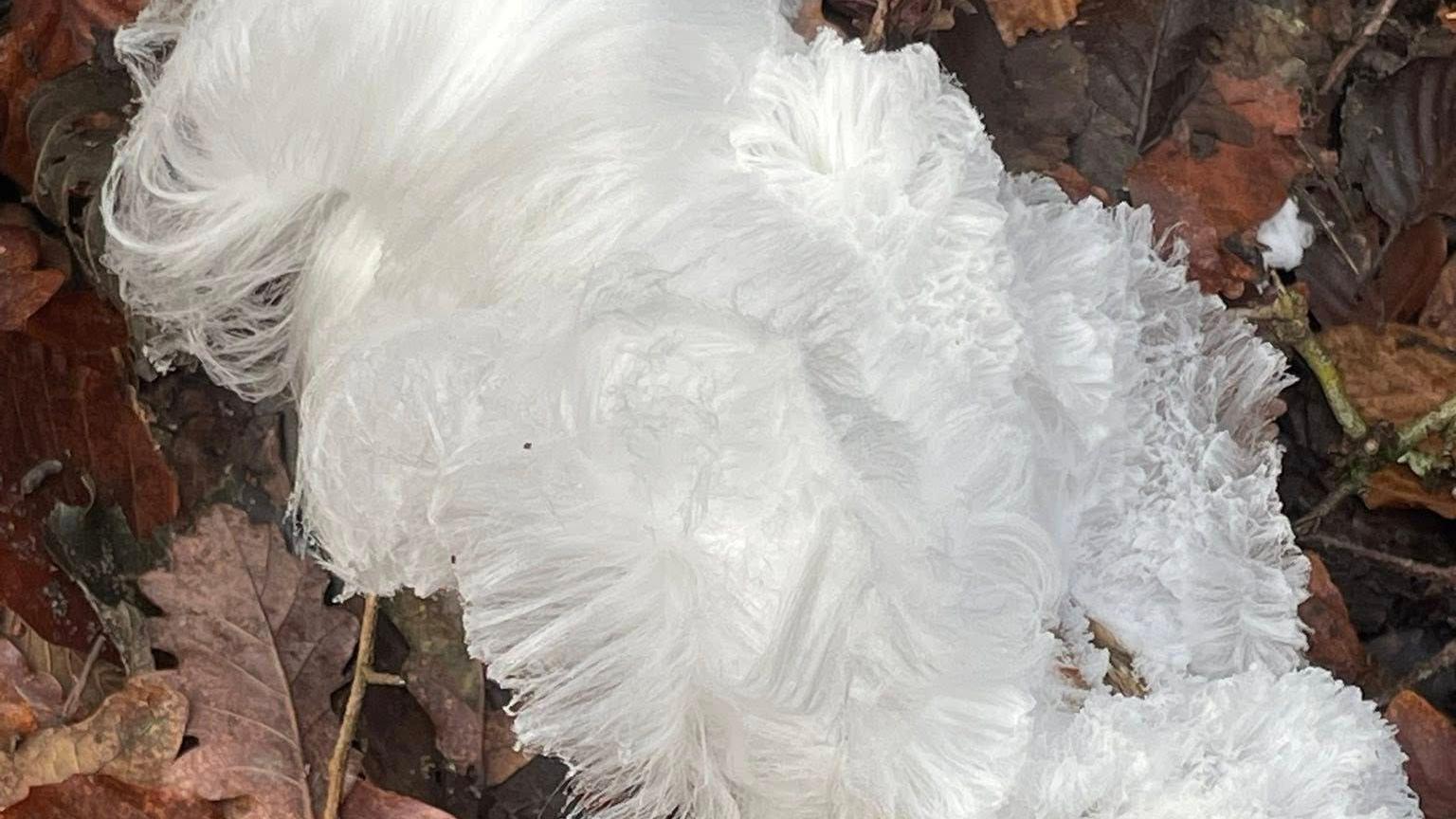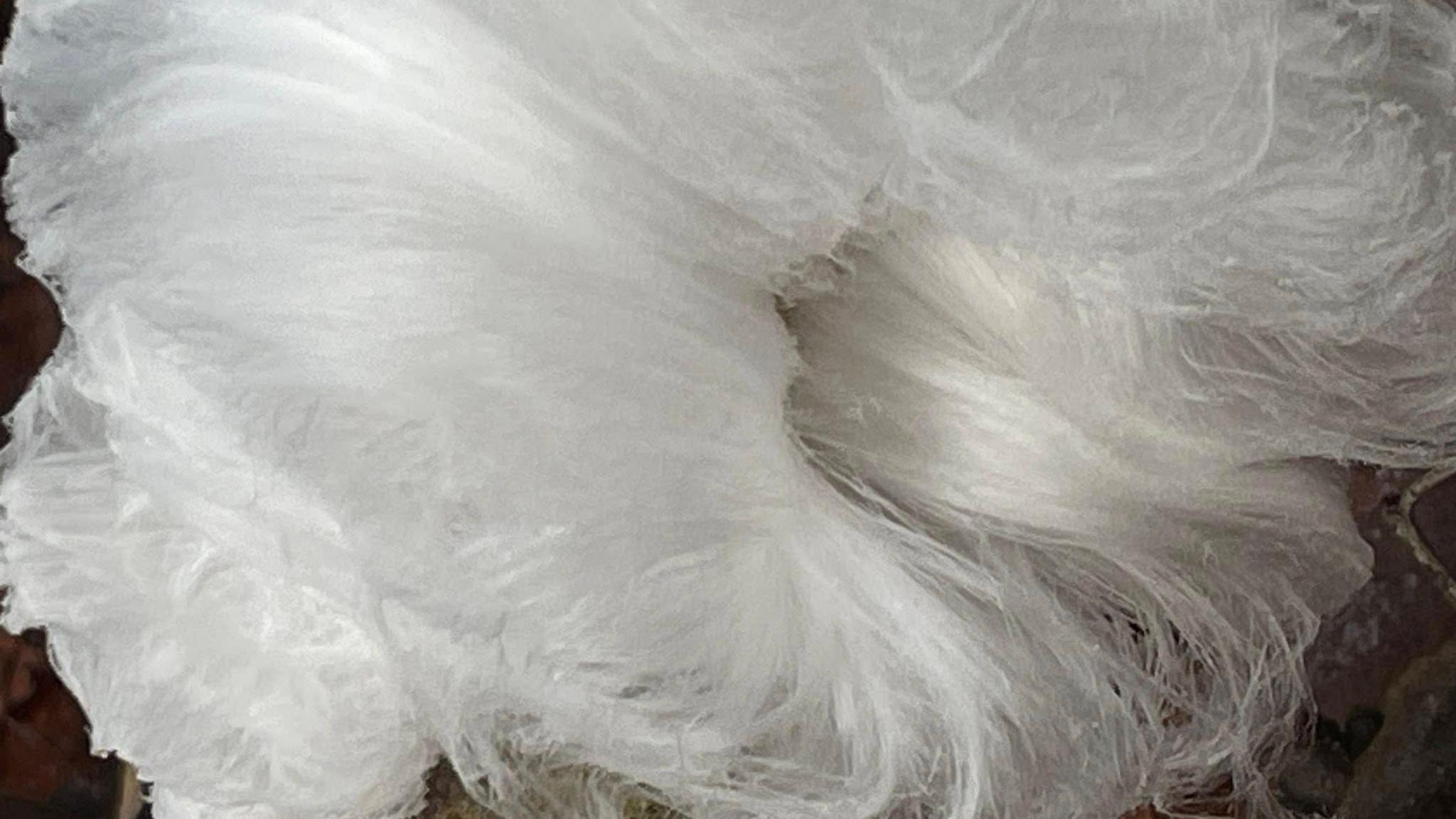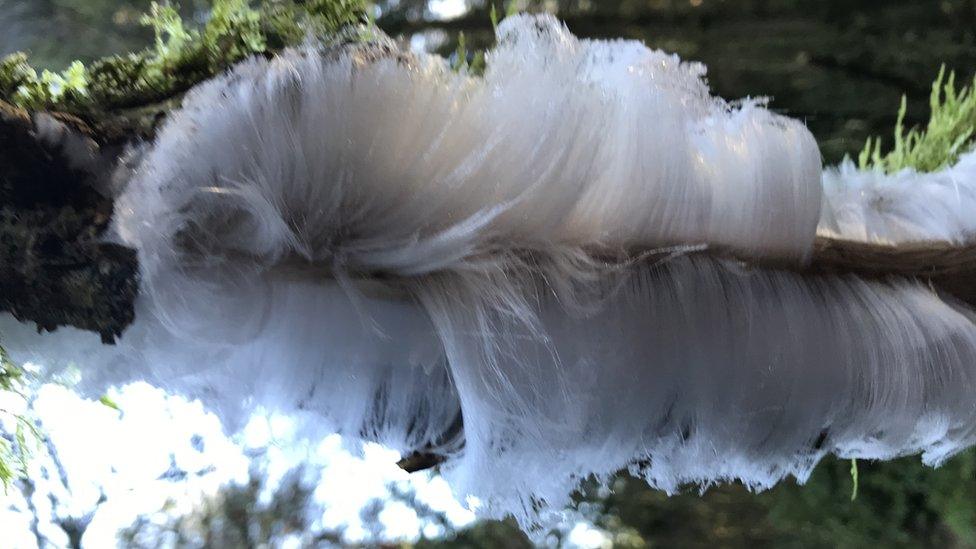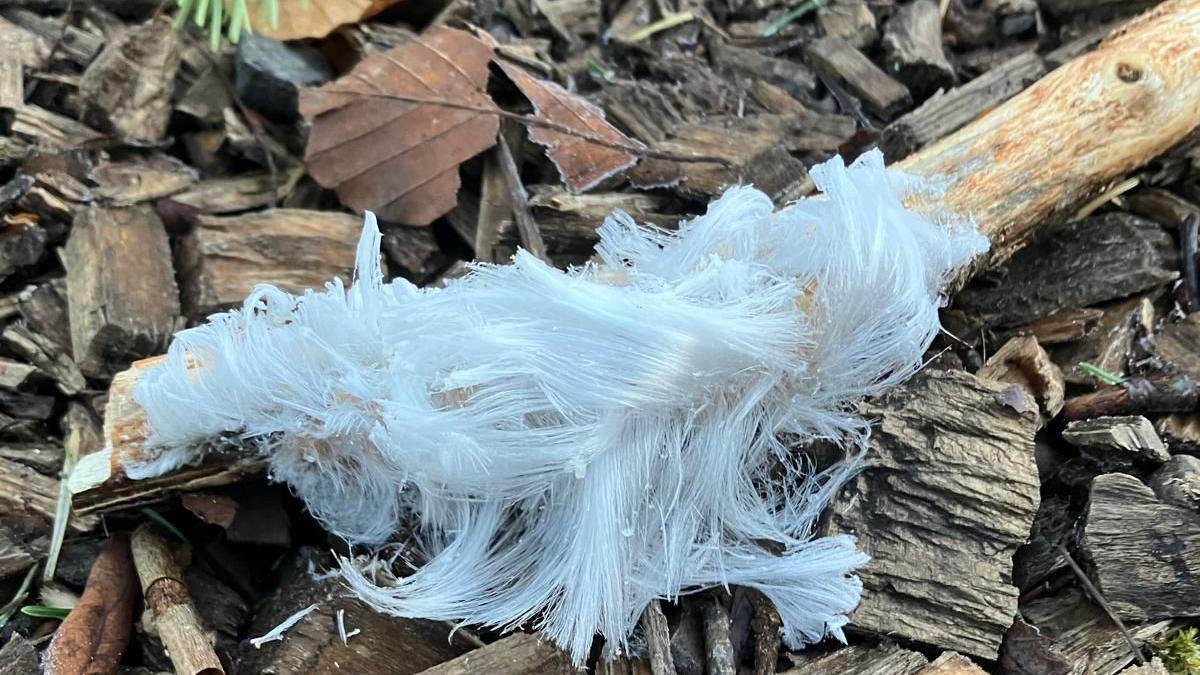Rare 'hair ice' formations discovered in woodlands

The natural phenomena were discovered in Gloucestershire and Somerset
- Published
Rare candy floss-like ice formations known as hair ice have been spotted in woodlands.
The phenomena were discovered by walker Cynthia Dallow in the Forest of Dean, Gloucestershire, on Wednesday and by a visitor to Wimbleball Lake on Exmoor, Somerset, at the weekend.
The rare-type of ice only forms on rotting wood in below zero temperatures at latitudes between 45°N and 55°N, according to the Met Office, external.
Ms Dallow said: "I thought it was a piece of rubbish in the ditch at first because it's really white and I got really cross, but it is rather magical."
Ms Dallow said she was walking in the Forest of Dean near Wenchford when she made the discovery.
"It was quite a big clump on a dead stick, five inches (13cm) wide and up to 10 inches (25cm) long," she said.
"It looked so delicate and just beautiful but you couldn't touch it because it would just collapse."
She said it was a "pretty incredible organism" but it "doesn't last very long".
"You have to catch it at the right moment, with the perfect conditions," she added.
"It disappears really quickly depending on the air temperature, so I do feel chuffed."

Ms Dallow said she thought the unusual formation was just a piece of rubbish at first
In Somerset, South West Lakes said a visitor to Wimbleball Lake made the same "amazing discovery".
A spokesperson said the "stunning delicate formation", also known as frost beard, was spotted at the weekend.
"It's a fleeting phenomenon and a rare spot," they said.
"A true winter treasure."
Although first reported in 1918, the exact cause of hair ice was only determined in 2015.
Scientists discovered the 0.01mm strands of ice grow thanks to a specific fungus called Exidiopsis effusa, the , externalMet Office, said.
Get in touch
Tell us which stories we should cover in Gloucestershire
Follow BBC Gloucestershire on Facebook, external, X, external and Instagram, external. Send your story ideas to us on email or via WhatsApp on 0800 313 4630.
Related topics
- Published4 January 2021

- Published21 February
